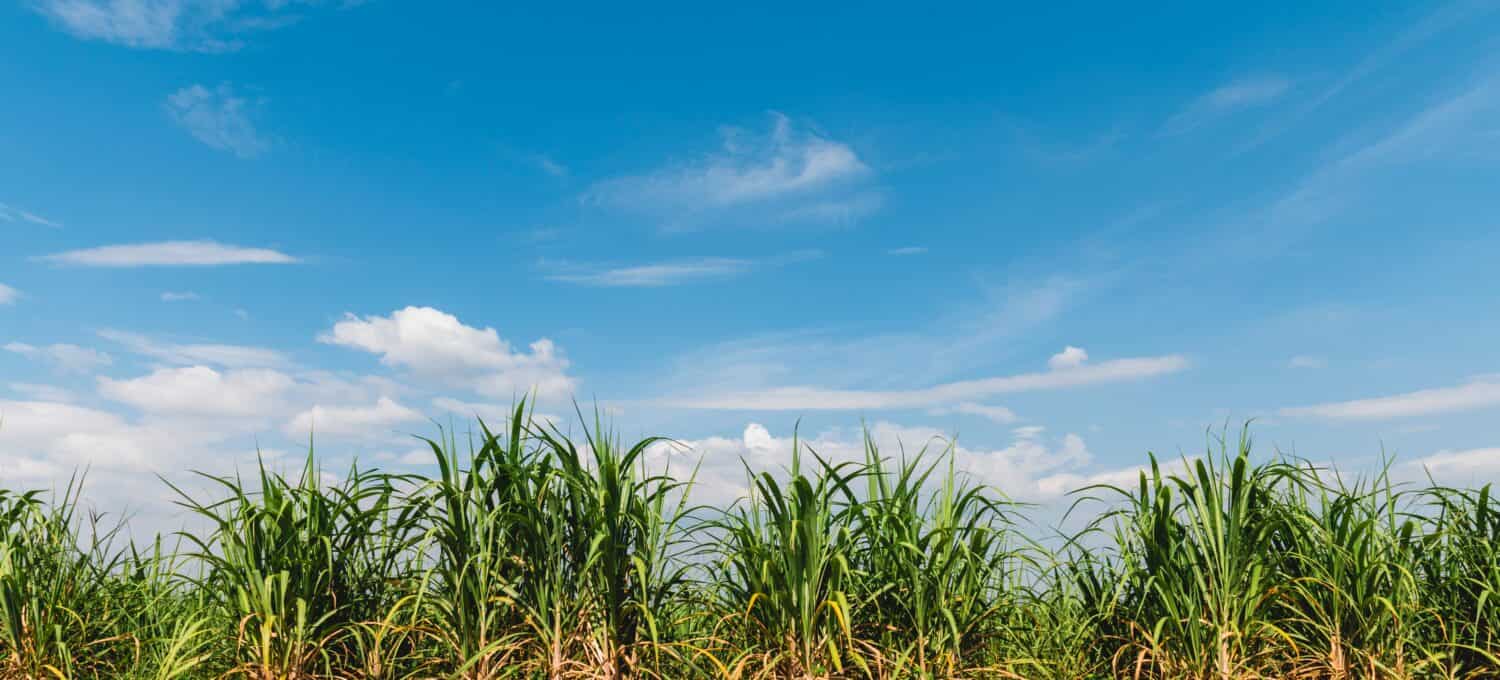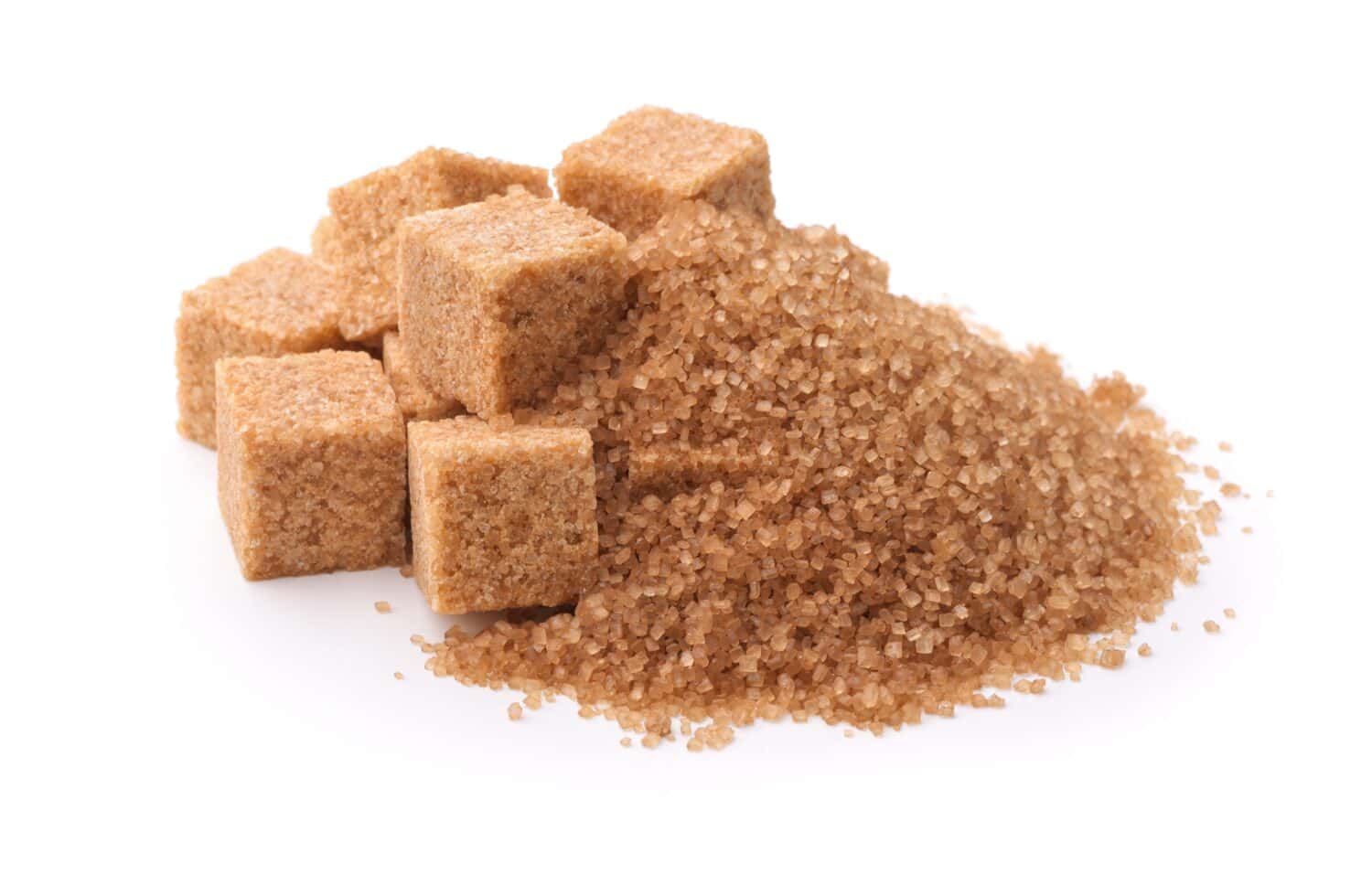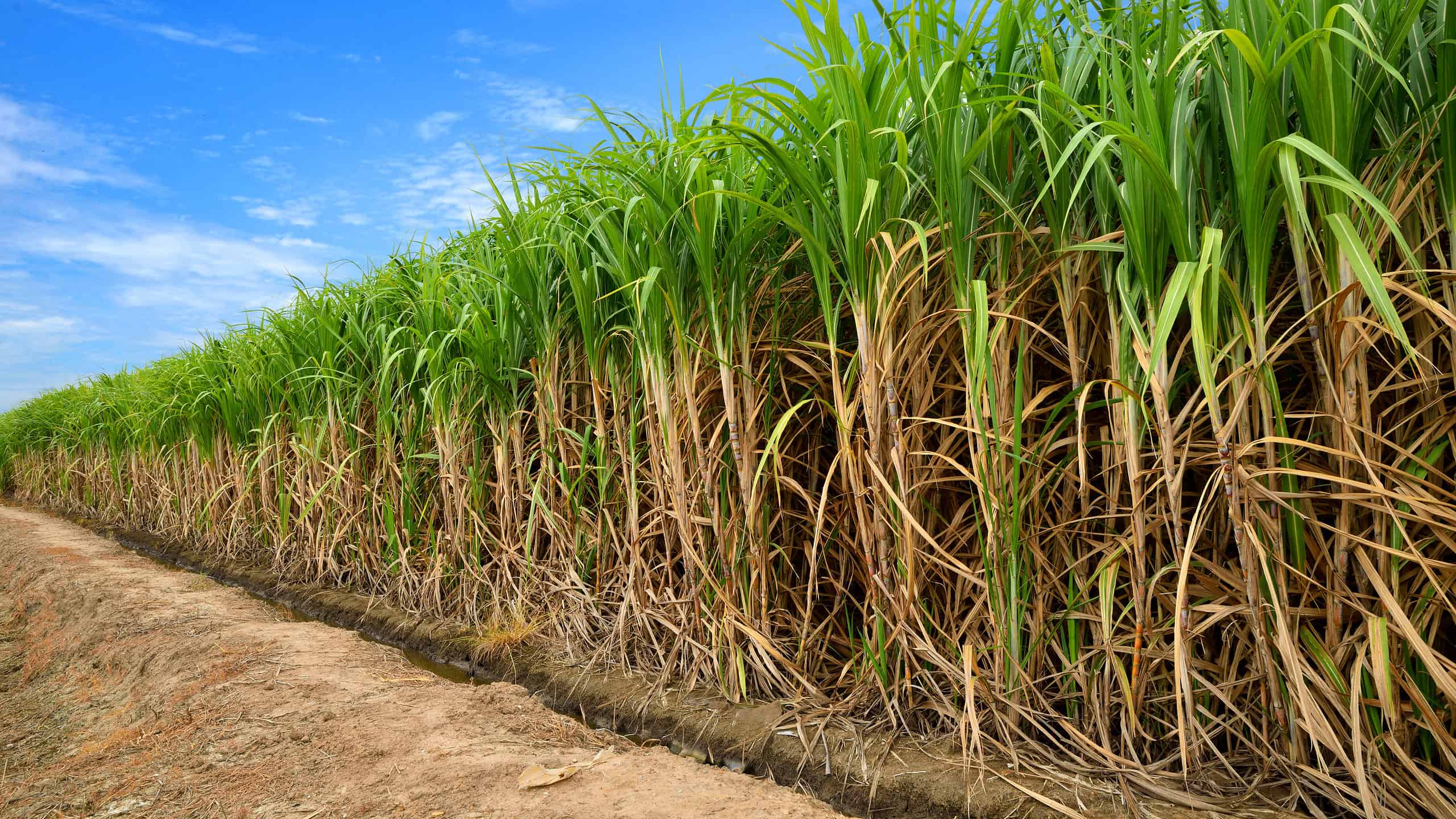Sugar is in nearly all foods in a grocery store. Even tomato sauces and ketchup use sugar! The average American consumes about 17 teaspoons of added sugar a day. Raw sugar comes from sugar canes, which need a specific environment to grow and thrive. Only a few states in the U.S. grow sugarcane on a large scale. Follow along to discover which states produce the most sugar.
About Sugarcane
Before we dive into sugarcane production in the United States, let’s learn more about this incredible plant. Sugarcane is a thick and tall perennial grass used in the production of sugar. They can grow up to 20 feet tall. Most of the sugarcane used in sugar production are hybrids.
Although the U.S. produces a lot of sugar, it isn’t the top-producing country; that title goes to Brazil. Sugarcane thrives in warm and humid environments. This tall grass needs a lot of water but also light, loamy soils with good drainage. Although sugarcane is used to produce sugar, you can also eat it raw. When eating it, though, it’s best to chew and suck on the inside of the sugarcane, but don’t swallow the cane/pulp as it’s tough and almost wood-like.
Florida

Sugarcane thrives in warm and humid climates.
©lovelyday12/Shutterstock.com
Florida produces the most sugar in the United States. In 2020, this warm state produced 17.34 million tons of sugarcane. This accounts for a little over half of the sugarcane produced in the country. So, where can you find sugarcane in Florida? This crop grows on 440,000 acres in the Everglades Agricultural Area (EAA). The largest company that produces sugarcane in the state (and country) is Sugar Cane Growers Cooperative of Florida.
Sugar cane thrives in Florida as this plant grows in humid weather despite not being native to the state or even the continent. Instead, sugarcane is native to parts of India, Southeast Asia, and New Guinea.
So, what is the history of sugarcane in Florida? Florida has grown sugarcane since about 1767. It’s likely the first commercial sugarcane plantation was started in New Smyrna sometime in the 1760s.
Louisiana

Sugarcane can reach anywhere from 6 to 20 feet tall.
©Anton Starikov/Shutterstock.com
Unsurprisingly, Louisiana follows Florida as the largest sugar producer in the country. They have been the second-largest sugar producers in the U.S. for decades, but this is changing. In 2020, Louisiana produced more than 2 million tons of raw sugar. According to the American Sugar Cane League, Louisiana was the top producer of sugarcane in the U.S. If the state continues to increase production, it may continue to beat Florida!
Currently, there are 11 sugar mills in Louisiana. The parish that produces the most sugarcane is Pointe Coupee Parish. Pointe Coupee Parish is part of the Baton Rouge, Louisiana, Metropolitan Statistical Area and has a surface area of 591 square miles.
Louisiana’s history with sugarcane began in 1751 when Jesuit priests brought sugarcane to the area. Growing and production grew quickly. Étienne de Boré granulated the first sugar crystals in the Louisiana Territory in 1795.
Texas

Sugarcane grows for 9 to 24 months, depending on the climate.
©Photoongraphy/Shutterstock.com
After Louisiana, Texas is the largest producer of sugar in the United States. Although third on our list, Texas’s production comes nowhere near touching Florida or Louisiana. In Texas, 1.5 million tons of sugarcane are harvested every year, but this number may vary.
So, where is sugarcane grown and produced in the state? Texas is massive, with a surface area of nearly 270,000 square miles, but not all of Texas is equipped to grow sugarcane. Texas grows and produces sugarcane in the lower Rio Grande Valley. The climate is perfect in the southern tip of Texas for growing sugarcane as summers are long and hot, and winters are short and mild. Sugarcane cannot thrive under freezing temperatures.
Sugarcane has grown in Texas since the 19th century, about a century after Florida and Louisiana.
Hawaii

Sugarcane arrived in the Americas in the 15th century.
©Bowonpat Sakaew/Shutterstock.com
Although Hawaii is worth mentioning for its long history of producing and shipping sugarcane, production is gone. Although sugarcane production is gone, you can still see sugarcane growing on the islands. In 2015, Hawaii produced about 165,000 tons of sugarcane.
Long before sugar mills and plantations were built, sugarcane grew in Hawaii, likely brought to the islands hundreds of years before. The first successful sugar enterprise in the Hawaiian islands was the Ladd & Company sugar plantation. The company was founded in 1835. Technically, though, John Wilkinson likely started the first sugar plantation in Hawaii in 1825 in Manoa Valley. It was not massively successful.
The Old Sugar Mill of Kōloa suffered from native Hawaiian strikes, who wanted fair treatment and better pay. During the 1840s, workers were only getting paid $0.125 a day. The Old Sugar Mill ultimately closed in 1996 and is now a National Historic Landmark.
The photo featured at the top of this post is © NIKCOA/Shutterstock.com
Thank you for reading! Have some feedback for us? Contact the AZ Animals editorial team.







